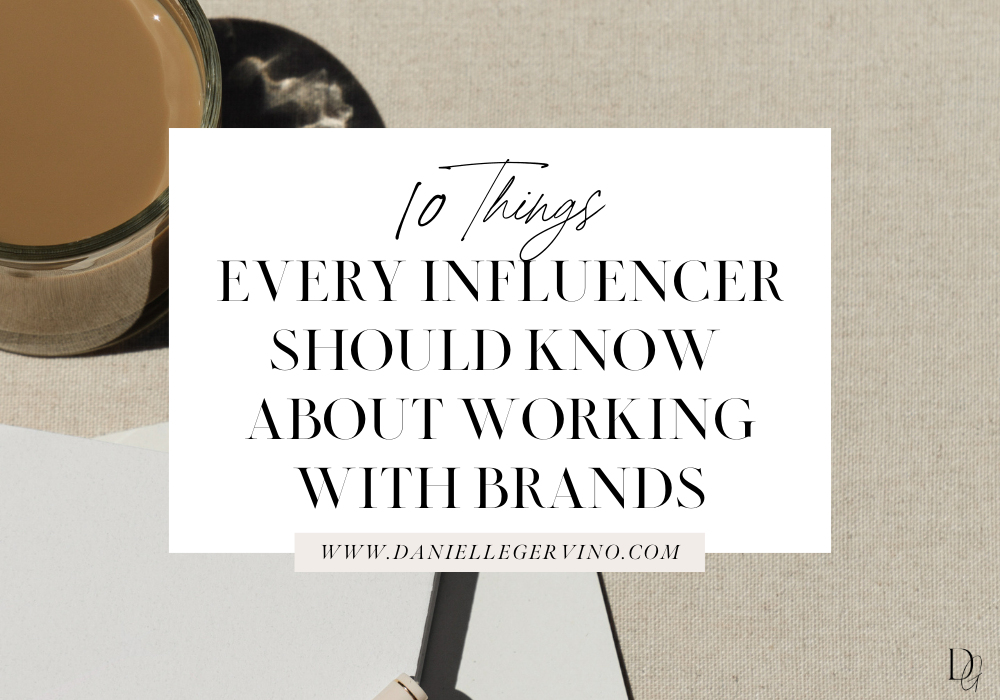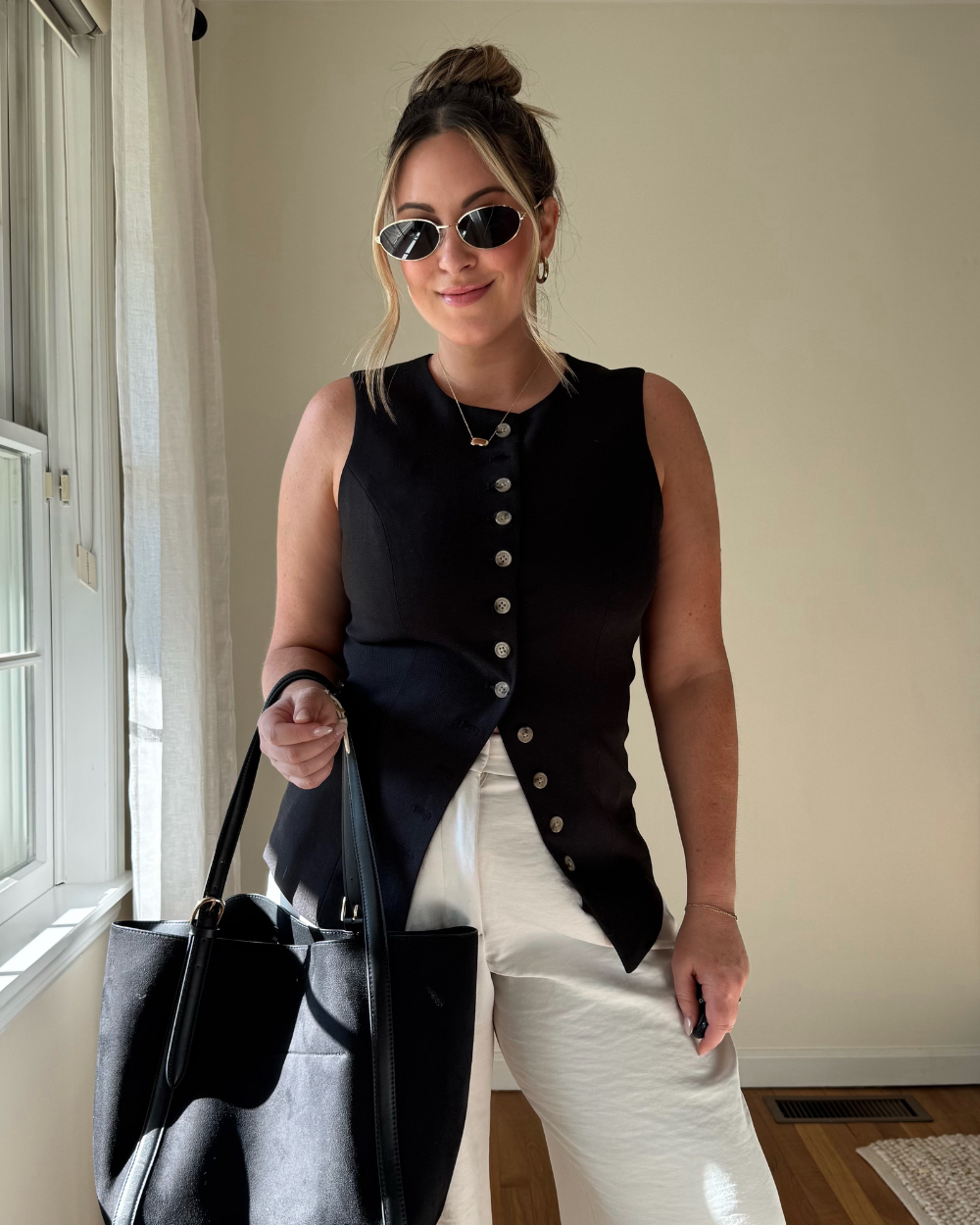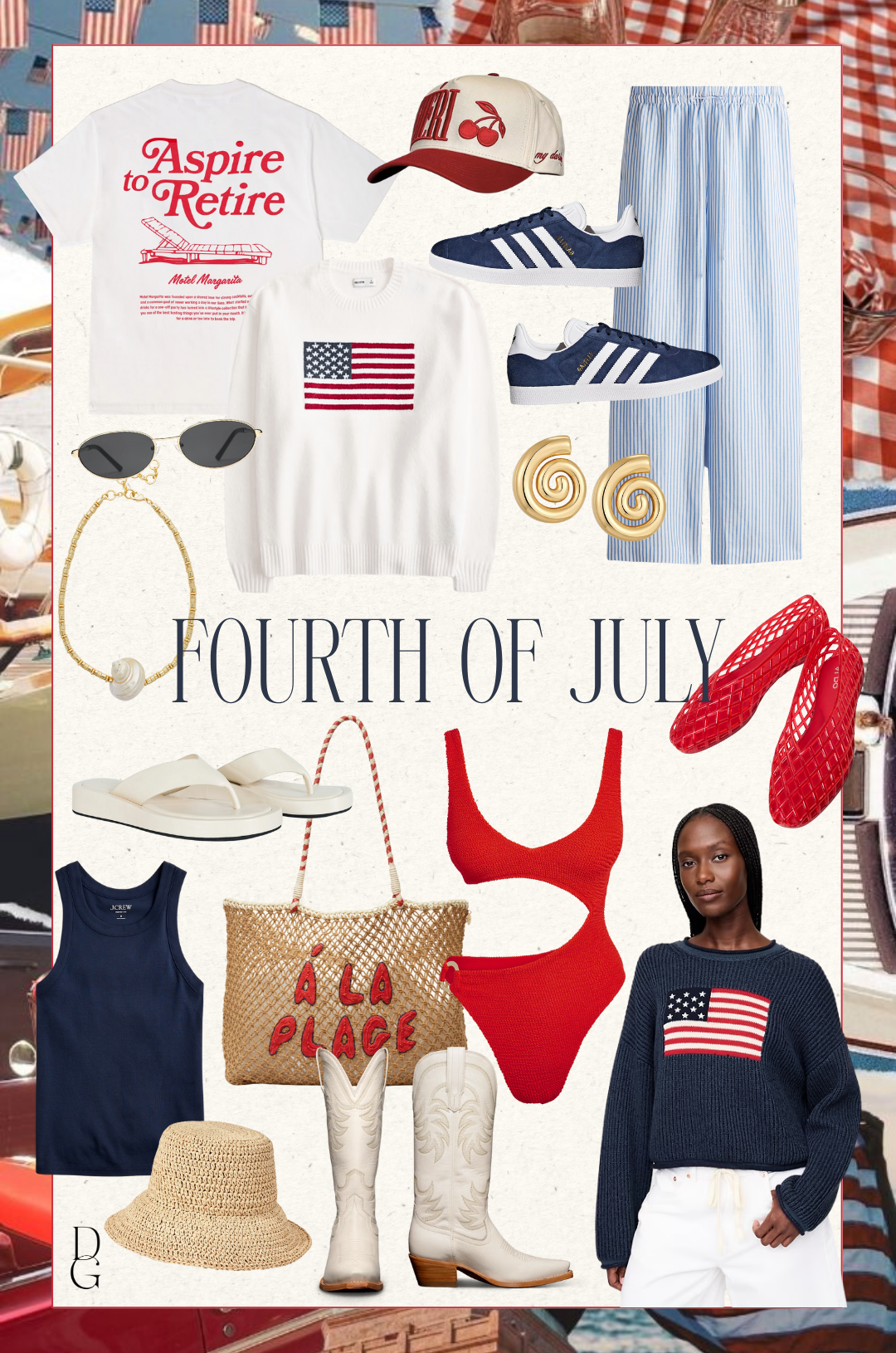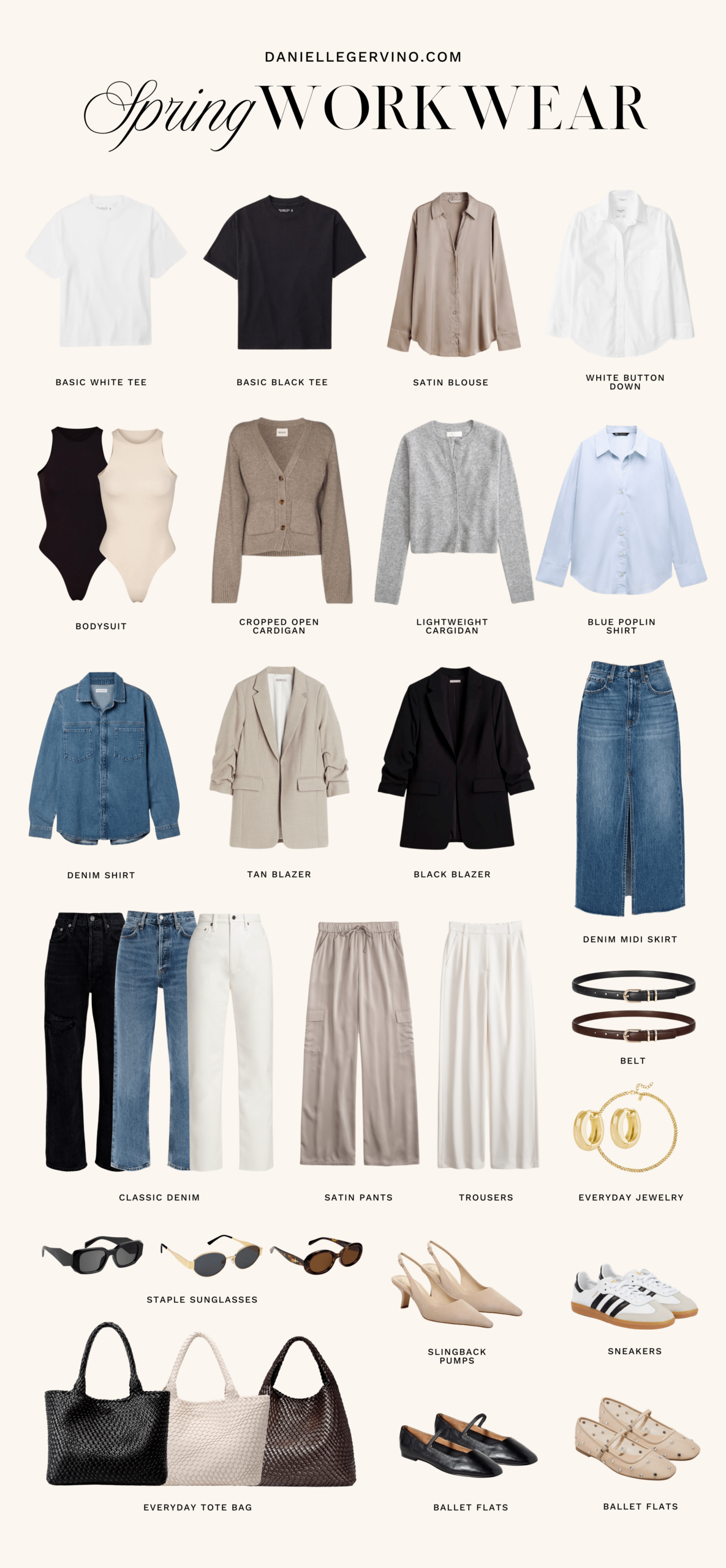Ten Things Every Influencer Should Know About Working with Brands
One of the most highly requested topics of discussion is consistently brand work and sponsorships. While I know there are many newer bloggers out there just wanting to know the basics and where to start, I also know there are plenty of you who have established a few great partnerships and are looking to take it to the next level.
In today’s post, I want to outline a quick call-to-action list of ten things that every influencer should know about working with brands.
1. It's Important to establish a presence as an influencer first
One of the questions that continuously comes up when it comes to working with brands is, "How many followers do I need before I start pitching to brands?" While I could put a number on it and give you a ballpark of, say, 10,000 followers on your socials, it's more about what you've got to show for yourself as an established influencer.
What does established even mean?
Established means a lot of things, including...Having a blog up and running with your own domain name and at least 3 months of consistent blog posts, staying up-to-date and active when it comes to your social media channels, having a track record of consistent growth since you started your blog, and perhaps most importantly, having high and organic engagement.
If you've checked off all of the above, first off, way to go girl! So many bloggers start a blog and expect to start working with brands a month out, but the truth is, it takes time to establish yourself. Patience is a virtue, lady.
2. Organic engagement matters
While a following is often the first thing that we notice when we look at a blogger, brands focus more on what's beyond the surface. It's no secret that with a little bit of money, anyone can buy their followers (even likes, for that matter), but brands want to see more.
When brands work with an influencer, their goals are to a) spread awareness and b) drive traffic and sales. How many people are you genuinely reaching? Most brands are going to want to know this information, and it's important to have something to show for it.
Google Analytics is a great way to monitor your website traffic. Create a dashboard on your analytics home page that houses stats such as 'Sessions', 'Pageviews', 'Users' and 'New Users'. This will help you get a feel for who's visiting your blog and how your monthly numbers rack up.
When it comes to Instagram, make sure that you've enabled a Business or Creator account. With a these types of accounts, you'll have access to valuable analytics such as 'Impressions', 'Reach' and 'Profile Views' and how they compare week to week (another great way to track your growth!).
Building organic engagement is not a science, but it's also not easy. In most cases, you get what you give. Make the time to connect with bloggers in your niche, because the more accounts you have liking and engaging with your content, the more people in your target audience your brand is exposed to.
ALSO READ: 7 strategies to boost your Instagram engagement and 5 Tips for creating an engaged Instagram community
3. Have a killer media kit at your disposal
To put it bluntly, brands want to know that you have your shit together, and part of that means having a media kit that sells your brand. You don't have to make your media kit all about numbers (although they are important). For example, I have a blurb in my media kit about myself, my blog and my ideal reader, followed by some content examples and past partnerships - stats take up a small corner of my media kit, and that's perfectly fine.
ALSO READ: 5 things brands want you to include on your media kit
4. Pitch with a purpose
One of the biggest mistakes bloggers make when it comes to pitching, is to pitch blindly. Get yo'self organized, girl! Start by making a list of brands that you know will be a great fit for both your blog and your ideal reader. Major bonus points if you also happen to love the brand!
Fact: I NEVER used to pitch to brands because I was always so overwhelmed with the influx of e-mails I was getting and having to respond to (from brands I had no interest in working with, mind you). Looking back, it made no sense. My pitch lists have landed me partnerships with Steve Madden, Sole Society, Vince Camuto and Bauble Bar to name a few. Believe me, taking the time to do this is so worth it!
ALSO READ: How To Pitch & Land Paid Partnerships, According To 3 Brand Experts and listen to our 3-part pitching series on Blogging, Unscripted starting with episode 5!
5. Be smart about finding contacts
The best thing you can do when pitching to a brand is to find a direct contact. By going straight to the source rather than straight to a generic contact form, you have a much higher chance of landing yourself in front of someone who can actually help facilitate a partnership.
I've learned to do things a little backwards when it comes to finding the right contact, and let me tell you, it is so worth it. Rather than starting on a company website, start on LinkedIn (aka the brand rep goldmine). Search for "X Public Relations" or "X Social Media" (X being the brand). Look first for titles with "manager" or "executive" and if you don't have any luck, simply reach out to whoever you can find connected with the PR or social media for that brand. Chances are, if they can't help, they can certainly point you in the right direction.
If you don't find what you're looking for on LinkedIn, check out the contact/careers pages of the website of the company you're pitching. Look for PR, or Social Media Relations, specifically. If you still can't find an e-mail there, try google searching (for example) "Free People PR" or "Free People Social Media Manager" and you'll most likely come up with something like "pr@freepoeple.com" or "socialmedia@freepeople.com".
If all of those attempts have failed, you can give the generic "contact us" section a go on the brand's website, and ask them to point you in the right direction to someone in PR or Social Media Relations.
Tip 1: Don't rule out social media! If you're having a hard time finding the right person to contact, send a direct message via Instagram or send a Tweet to the brand!
Tip 2: Once you find the right contact, don't lose it! Keep a running list (I use Google Docs) with their name, company, e-mail, and some notes about your conversation(s). You never know when you might need that contact down the road!
6. Always personalize your pitches
Want to know a really horrifying story? When I first started blogging, I set aside a day to pitch to a few different brands. I was using the same shell of an e-mail with a few details changed around. For each new brand I pitched to, I simply hit "reply" on the last e-mail, deleted the "to" form and the previous text, and changed some details around. Well, for one e-mail, I forgot to do that, and that company got both my e-mail to them, and my reply to a different company with the same pitch. Omg, I'm cringing even thinking back to this. I was mortified.
Needless to say, I learned that a personal pitch not only saves you from the possibility of potentially doing something totally idiotic like that, but it also helps you to get to know the brand, and is much more genuine. If this is a company you really want to work with, put in the extra effort.
If you've found a direct contact, skip the "Hi there" and address them by name. Think of the hundreds of e-mails companies are getting daily, and think about how you can make yours stand out. Help prepare your pitch by getting to know the company a little better. Familiarize yourself with their mission statement and their aesthetic; know how they run their social channels and their 'brand image'. All of this information will help you!
7. Get to the point
This is not a recommendation. It's an order. Keep your pitch short and sweet. I asked a friend in PR what the most common reasons were for her and her colleagues moving a pitch e-mail into the trash bin. Want to guess what came up at the top of the list? A long, drawn out pitch.
When you craft your pitch, take yourself back to elementary school and follow the 'intro, body, conclusion' format:
Intro: Be clear about who you are and what type of blog you run (a great way to do this is to include embedded links to your blog and your highest performing social the first time you mention them in your e-mail).
Body: In 1-2 sentences, tell your contact why you'd be a great fit for their brand, and give an example. (ie: X's pieces are a direct reflection of my personal style, which is why I think we'd be a great fit for each other. Furthermore, the brand's vintage-inspired style is something I know would resonate with my readers.)
Conclusion: End with a purpose (ie: I'd love to brainstorm some ideas and talk more details about how we can work together or I have some great ideas for a styled shoot that I'd love to chat more about).
Give the brand time to respond. If you don't hear back within a week, think about sending a quick follow up e-mail. At the end of the day, know that you're not gonna win 'em all, and that's okay.
Lost on where to start? Grab yourself a pitch template here!
8. Fight for your worth (but be nice)
Let's face it - many brands see trading a product for a post (including photography, content creation, editing, etc.) as an even exchange. While it can be tempting to write a scathing e-mail back to those brands who want a 3-part blog post, 3 Instagram features, social shares and rights to your images all in exchange for a pair of shoes, it's not in your best interest.
I've been there - offended and angry after receiving an outrageously irrational reply from a brand - and the best thing to do if you're temped to let them have it, is to step away and give yourself some time.
That being said, it's okay to fight for your worth! Have a rate sheet on hand should a brand ask for it, but be willing to negotiate. Instead of replying with, "Sorry, but I don't work for free", instead awaken your inner Mary Kay saleswoman who is about to convince you that you NEED that eye makeup remover and tell that brand why working with you will be GREAT for their brand.
Always meet a negative response with your final plea. If a brand outright says they're not interested, I'm definitely not saying to push it, but if they're telling you they don't have a budget, they most likely do, and if you convince them you're worth it, they might just find that they magically have room in their budget for a collab!
9. Protect yourself with a contract
Collaborations and sponsorships can be exciting. So much so that it can be easy to tune out all of the logistics and the fine print. How many times have you signed a contract without looking at it? (guilty, btw) Avoid doing this with influencer contracts you receive from brands.
Pay attention to image credit and dedicated sponsorships, specifically. While it's common for brands to have a clause about reusing your images, make sure that you get the credit you deserve. Blogger-brand relationships should always be mutually beneficial.
A dedicated sponsorship grants a brand exclusivity, and this can be tricky as a blogger. Some brands will try to limit who you work with and what you promote for up to 12 months after your sponsored post with them goes live. Seeing a dedicated sponsorship clause in a contract is a red flag!
Working with a brand who isn't supplying a contract? Use your own.
Too often contracts are seen in a negative light, but they don't need to be! A contract that benefits both parties should simply be seen as a net, should anything not go as planned.
10. There shouldn't be any other option besides going above and beyond
And there's one really simple reason why: a continued relationship.
Working your butt off for a partnership should be the norm. Sponsored posts shouldn't just be a 'one-and-done', they should take time - time to shoot, time to edit, time to tailor your content to the brand, time to promote, time to re-promote, and some more time for all of the in between.
It's actually pretty simple (and obvious) - the more time you put into a sponsored project, the better relationship you'll secure with the brand. And guess what ongoing relationships lead to? More sponsored projects. Duh.
My biggest paychecks, hands down, have been from brands that I've worked with more than once. A second, third and fourth partnership makes you more of a 'partner' and gives you more value. Plus, it's a great resumé builder to show that you've had a long-lasting relationship and churned out some fantastic content for a brand!
Make sure to browse our Blogger Hub for more resources on working with brands, and head over to our Blogging, Unscripted podcast page for detailed episodes filled with anecdotes and actionable strategies.




